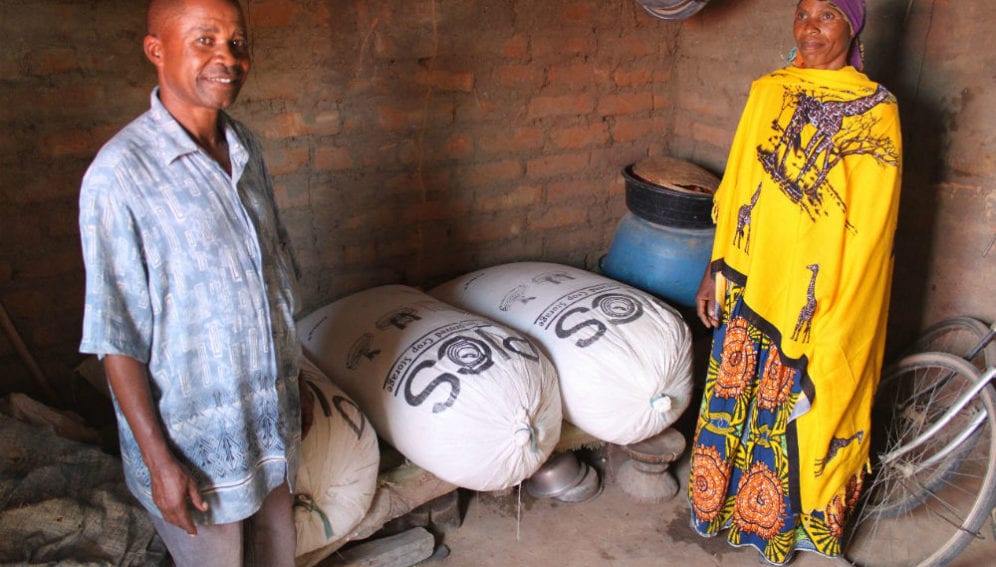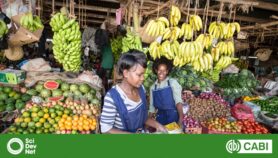Send to a friend
The details you provide on this page will not be used to send unsolicited email, and will not be sold to a 3rd party. See privacy policy.
The technologies needed to curb food losses after harvests exist, and the first thing farmers need to adopt them is awareness that the problem can be solved.
“Reasonable investments” and the right business models to develop markets, engage entrepreneurs and ease access to finance can then create a system to ease access to those technologies, a group of PostHarvest Management (PHM) specialists said last week.
“Much of the knowledge, technologies, and practices needed to drastically reduce postharvest and food losses are already available,” says the Bellagio statement on PHM, a call for action issued on 26 March.
Postharvest losses refer to grain, roots, fruits and vegetables that are lost or lose quality during processing, transport or storage. According to the World Bank, improving PHM could avoid losses equivalent to the food needs of 48 million people in Sub-Saharan Africa. The Sustainable Development Goals aim to halve these losses by 2030.
“A metal silo would be the Rolls Royce in terms of PHM investment for a small farmer.”
Martin Fischler
One established method to protect a crop from pests after harvest is to store grain in a metal silo, close the lid, and fumigate using phostoxin tablets, explains Martin Fischler, one of the statement's co-authors. Recent tests on Tanzanian farms show that farmers can skip fumigation: the insects suffocate if the silo is closed hermetically.
A metal silo “would be the Rolls Royce in terms of PHM investment for a small farmer,” says Fischler. Cheaper plastic silos and hermetic bags are additional options for farmers in developing countries.
“It's not rocket science or high-tech material,” says Fischler, who works as senior advisor at Helvetas, a development organisation in Switzerland.
But the price of silos and other technologies is the biggest barrier, according to Shamim Daudi, head of advocacy and coordination for a PHM project funded by Helvetas in Tanzania.
Although having adequate storage allows farmers to sell their crop at the most profitable time, many cannot afford a standard 500-kg, family-size metal silo, which costs about 250.000 Tanzanian shillings (US$110). A 100-kg hermetic bag costs about TZS5,000 (US$2.21).
Shamim Daudi says there are ways to ease access without giving away tech for free. “We work with market actors such as agrodealers and artisans, to promote the technologies and influence their adoption,” she explains. For example, under an informal micro-finance programme and with support from agrodealers, some Tanzanian farmers can pay for half the metal silo upfront, and the rest after they have sold their harvest.
The first step to improve PHM is raising awareness, says the statement, which was prepared last September at the Rockefeller Foundation's Bellagio centre in Italy, during an event that convened 22 representatives from government, research, business and NGOs.
“When you talk to a farmer, they see it as natural to lose a bit at different points along the production chain,” says Fischler. It is important to show they are in fact losing money, and that buying a metal silo or hermetic bags is a sound investment, especially compared with cheap but potentially toxic pesticides.
Raushan Bokusheva, an agricultural economist at the Zurich University of Applied Sciences in Switzerland, says post-harvest technology should be considered as one element in a wider approach to ensure food security.Bokusheva, who was not involved in drafting the Bellagio statement, worked with Fischler and others to evaluate the factors behind the adoption of metal silos from 1983 to 2003 in four Central American countries — which Fischler calls the “mother of all success stories” in PHM.
“We found that the effect [of these technologies] was highest for middle-sized or large farms, but for small subsistence farmers it practically didn’t matter,” she recalls. “It’s good to support farmers and facilitate the adoption of PHM technologies, but for those who don’t produce enough even for their own family, it's more important to improve their productivity.”
Fischler says that in the past, many efforts focused too much on boosting agricultural production, which brings more immediate results than tackling postharvest losses — a complex, lengthy process. “My plea is really for [PHM] to remain high on the agenda.”














